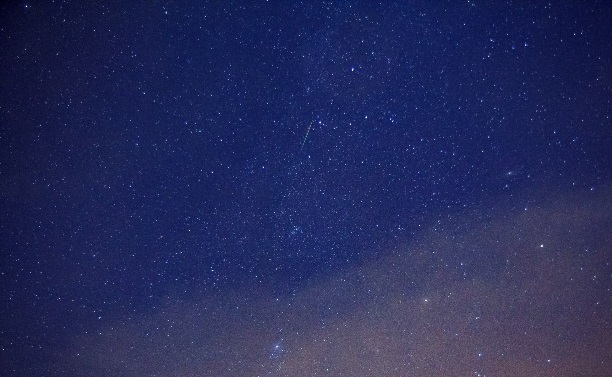Photo by Vladimir Kondakov.
From 11 to 14 August in the northern hemisphere can be seen from the peak of the rainy stellar constellation Perseus. Favorable weather conditions and the lack of the moon in the sky space allows fans to see the meteors burn up in the atmosphere.
In the night from 12 to 13 August, many Tula did not miss the opportunity to enjoy this incredibly beautiful space representation:
 Photo Alexei Gorokhov.
Photo Alexei Gorokhov.
By the way, “to catch the star ‘will be almost the end of August, however, the greatest frequency of falling meteors will be observed only until August 14.
Perseid activity from year to year is not constant, the scientists expect in 2015 it burst. In normal years, the meteor shower relatively removed from the orbit of the Earth and is outside it. Periodic comet trails closer to Earth accompanied by an increased activity of the Perseids. The last time this happened in 2004 and 2009.
The following outbursts flow to take place in 2016 and 2028. In 2015, the comet trail will be held in 79 thousand kilometers from the Earth.
Admire the best flow away from city lights, then there is a chance to see many more faint meteors.
To observe the meteor shower does not need any astronomical devices, so enjoy a starry summer spectacle can be anyone. Perseids are formed as a result of the passage of the Earth through the trail of dust particles released comet Swift-Tuttle. The smallest particles the size of a grain of sand burn up in Earth’s atmosphere, forming a star rain. At first, he “shed” with the greatest force, then gradually weaken.
Perseids – the meteors white, sharply draws the sky. The glow of some particularly bright meteors lasts a few seconds. The name comes from the name Perseid constellation Perseus, from which, if you look closely, fly these “shooting stars».
No comments:
Post a Comment